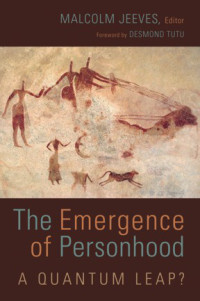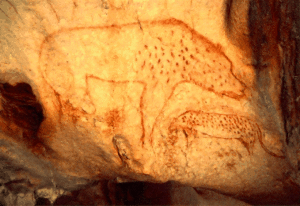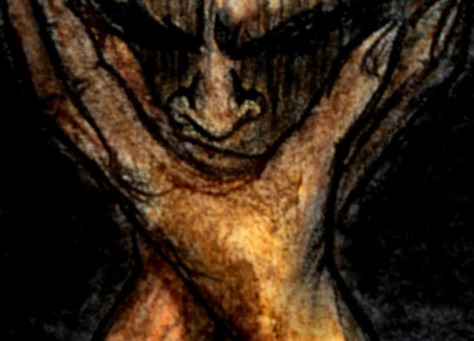 The second essay in The Emergence of Personhood, A Quantum Leap? was written by Ian Tattersall, Curator Emeritus, Division of Anthropology, American Museum of Natural History. In his essay Tattersall digs more deeply into what it means to be human from the perspective of evolutionary biology. He agrees with Richard Byrne (see The Dividing Line) that capacity for language is an important factor, but capacity for language is only one piece of a larger picture – an active sense of self and capacity for symbolic thought. Uniquely human personhood, in Tattersall’s view implies “an active sense of self” with an internal sense of self and the ability to relate this to an external world of others like us, other humans.
The second essay in The Emergence of Personhood, A Quantum Leap? was written by Ian Tattersall, Curator Emeritus, Division of Anthropology, American Museum of Natural History. In his essay Tattersall digs more deeply into what it means to be human from the perspective of evolutionary biology. He agrees with Richard Byrne (see The Dividing Line) that capacity for language is an important factor, but capacity for language is only one piece of a larger picture – an active sense of self and capacity for symbolic thought. Uniquely human personhood, in Tattersall’s view implies “an active sense of self” with an internal sense of self and the ability to relate this to an external world of others like us, other humans.
Personhood in the sense that I am implying here most likely derives from the highly distinctive ability of members of Homo sapiens to think in a symbolic manner (see discussion and references in Tattersall 2012 Masters of the Planet). We have the cognitive ability to break down our internal and external worlds into a huge vocabulary of discrete symbols that we can shuffle, according to mental algorithms, to create novel combinations. Such rearrangements add up to our unique capacity to envision previously unimagined and unobserved possibilities, and to form new interpretations of the world around us. (p. 38)
A couple of important points. (1) This discussion of personhood is a feature of our species as a species. It does not follow that disabilities, diseases, or developmental stage in an individual makes them “less human.” (2) The capacity for language isn’t just an ability to communicate direction based on instinctual gestures – it goes far deeper than this. Language itself is a learned means of abstract symbolic thought and communication. Tattersall argues that our sense of “individual personhood is at least as much a story we tell ourselves about ourselves” as it is a set of responses we share with chimpanzees. This makes humans qualitatively different from other living inhabitants of earth.
The nature of the fossil and archaeological record makes it difficult to determine exactly when this shift in cognitive ability occurred. Tattersall argues that “the shift to our unique symbolic mode was made in a single step. This unusual capacity of ours was apparently not acquired piecemeal, at least on the biological level.” (p. 40) There is little evidence that any other line among hominins (modern humans and extinct human species including genera Homo, Australopithecus, Paranthropus, and Ardipithecus) including Neanderthals, exhibited a capacity for symbolic thought. The first clear evidence for symbolic thought shows up in the archeological record less than 100,000 years ago while the first unequivocal evidence is found in cave paintings around 40,000 years ago.
This late timing for the first appearance of overtly artistic activity in Europe is doubtless an artifact of an incomplete record; nonetheless, it helps us bracket the period during which the human symbolic spirit emerged. Little if any evidence exists for the workings of symbolic minds significantly before 100 kya; yet by ~ 40 kya such minds were magnificently expressing themselves. (p. 44-45)
 This is where we come back to the importance of language. Biological evolution over millions of years reached a point where Homo sapiens were capable of inventing language.
This is where we come back to the importance of language. Biological evolution over millions of years reached a point where Homo sapiens were capable of inventing language.
Language is the most remarkable and undeniably ubiquitous of uniquely human behaviors, and, equally importantly, is virtually synonymous with symbolic thought. Not only do both language and our cognitive capacity depend on the creation of vocabularies of mental symbols, it is effectively impossible to imagine one in the absence of the other. And whether or not, as seems entirely possible, the greatest significance of language is as a portal of interior thought rather than as a medium of communication, it is also undeniably a communal, externalized attribute, and thus one likely to spread rapidly through a population already possessing the biological capacity to acquire it. (p. 45)
Anatomically modern humans became culturally modern humans with the invention of language and capacity for symbolic thought. Language, art, writing, stories, math, science, … Star Wars and a man on the moon.
Tattersall concludes:
In terms of human personhood, then, it seems hard to avoid the conclusion that the quest for the origin of the human sense of self-individuality is more or less synonymous with the search for the origin of the unique modern human symbolic cognitive mode. (p. 48)
 Although we tend to attribute human modes of thought to other species – my cat, chimpanzees, extinct hominins – this doesn’t do justice to the reality. Humans really are, Tattersall suggests, “different in a profound sense.” With respect to other hominins:
Although we tend to attribute human modes of thought to other species – my cat, chimpanzees, extinct hominins – this doesn’t do justice to the reality. Humans really are, Tattersall suggests, “different in a profound sense.” With respect to other hominins:
We need to dignify them with their own identities, and to acknowledge that their ways of perceiving themselves and the world around them were almost certainly not ours. And that means also acknowledging that our own sense of identity, of personhood, is unique, and of astonishingly recent origin. (p. 48)
Our capacity for symbolic thought, self-reflection, the communal cultural developments that language enables, the cumulative development of culture and technology – all of these capacities make us human as a species.
Does Tattersall’s argument for the importance of symbolic thought make sense?
How should this influence the way we consider humans as distinct from other existent species?
What might it mean for a Christian understanding of human origins and personhood?
If you wish to contact me directly you may do so at rjs4mail[at]att.net
You may also comment on It’s In Art at Jesus Creed.
Advertisements Share this:




